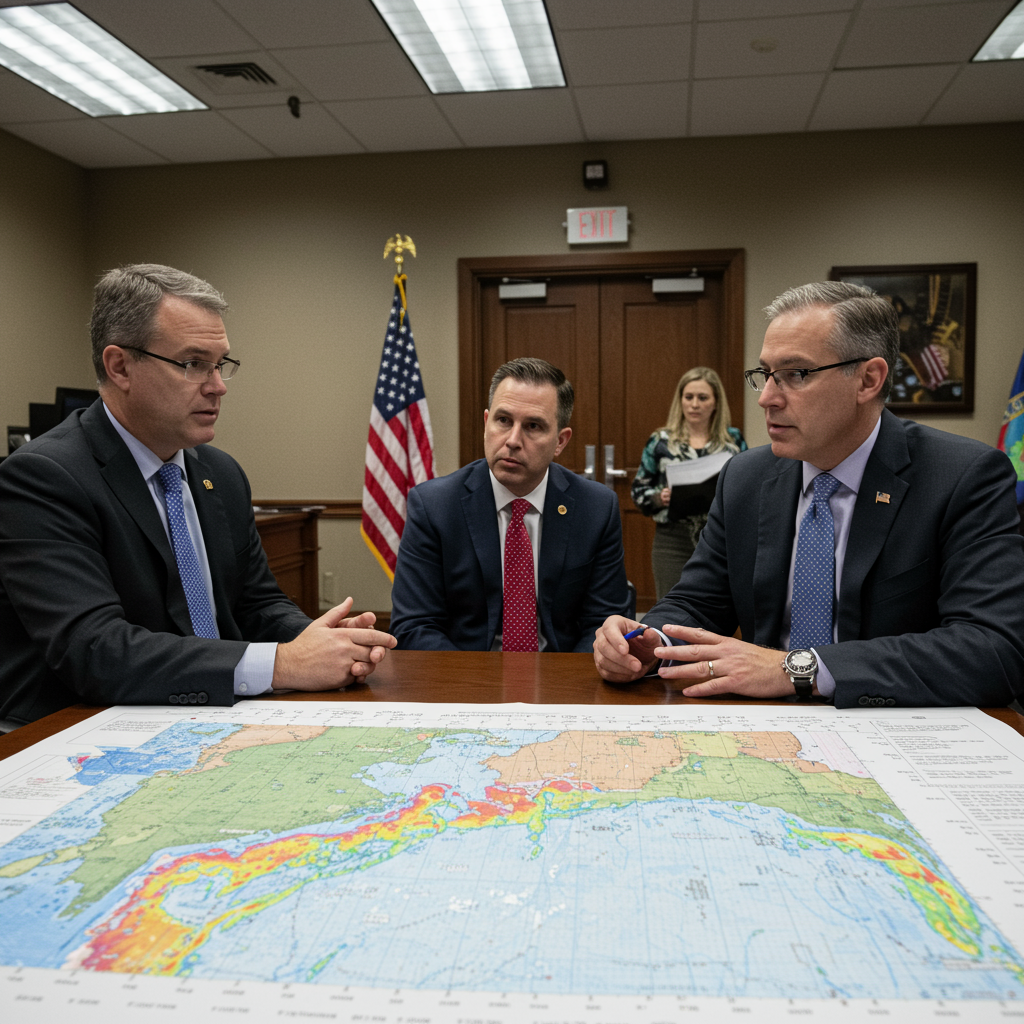Intense discussions about a potential ceasefire in Gaza have recently gained momentum. This renewed push follows a statement from former United States President Donald Trump. He indicated israel had agreed to specific terms for a temporary truce aimed at halting the nearly 21-month conflict. However, the path to peace remains fraught with complexity.
Mediators are working to bridge significant gaps between israeli and Palestinian demands. While hope flickers, deep skepticism persists among analysts and those on the ground. Can this latest proposal succeed where previous efforts have faltered? Understanding the details and the political hurdles is crucial.
Unpacking the Proposed 60-Day Truce
Reports suggest the US-backed proposal centers on a 60-day pause in hostilities. This temporary ceasefire is designed to facilitate a crucial exchange. The plan reportedly involves releasing 10 living Israeli captives held by hamas. It also includes the return of the bodies of 18 deceased captives. In return, Israel would release a number of Palestinian prisoners.
The proposed release would happen in phases over several days. Estimates indicate around 50 Israeli captives remain in Gaza, with approximately 20 believed to be alive. The proposal also addresses the urgent humanitarian crisis. It calls for the United Nations (UN) and the International Committee of the Red Cross (ICRC) to help distribute aid. These international bodies would work to ensure sufficient quantities reach Palestinians in Gaza. Finally, the plan includes calls for the phased withdrawal of Israeli troops from specific areas within the Gaza Strip.
Details of the Proposed Exchange
The focus on captive release is a significant driver. The proposal aims to bring home some of the Israelis held since the October 7, 2023, attack. Reports suggest Israel’s Prime Minister Benjamin Netanyahu reportedly agreed to the original US proposal’s conditions. This suggests a framework centered on this phased exchange and temporary pause is acceptable in principle to at least part of the Israeli leadership. However, the acceptance is contingent on Hamas’s response and potential amendments.
Hamas’s Counter-Demands: Key Sticking Points
Hamas has reportedly given mediators a “positive response.” However, this response includes significant proposed amendments. These changes highlight the fundamental disagreements that have doomed past negotiations. Hamas and other Palestinian groups have three main demands they insist upon.
First, they demand an end to the Gaza Humanitarian Foundation (GHF). Hamas argues this entity serves Israel’s political agenda. They claim it makes aid conditional on political or military goals. Humanitarian organizations have widely criticized the GHF. A UN official called it a “cynical sideshow” and a “fig leaf for further violence.” These concerns are amplified by tragic reports. At least 743 Palestinians have reportedly been killed seeking aid at GHF sites recently. A Haaretz report even alleged Israeli soldiers were deliberately ordered to fire on unarmed people waiting for food.
Second, Hamas seeks an Israeli military withdrawal. Specifically, they want Israeli forces to return to positions held before a reported ceasefire violation occurred in March of this year. This demand follows extensive Israeli ground operations in May. These operations aimed to take “operational control” of large areas of the Strip. Israel had already created corridors like the Netzarim and Morag corridors early in the conflict. These effectively split Gaza into northern and southern sectors.
Third, Hamas requires international guarantees. They want assurances that Israeli air attacks and ground operations will not resume. This is sought even if the temporary ceasefire ends without a permanent resolution to the war. This demand stems from the reported unilateral breaking of a previous ceasefire in March. That earlier truce had been agreed upon in January. Palestinian groups claim they upheld their end of the earlier agreement. They seek a US guarantee to prevent a repeat scenario.
The Israeli Stance and Internal Hurdles
While initial reports suggested Netanyahu agreed to the original US proposal, he has since called Hamas’s amendments “unacceptable.” His publicly stated goals remain unchanged. He insists the war will not end until all captives are released and Hamas is “destroyed.” Many analysts view the latter objective as impossible. They believe it serves as an open-ended political goal for Netanyahu. This could potentially allow him to prolong the war.
Netanyahu’s political future is intrinsically linked to the ongoing conflict. He currently faces a corruption trial in Israel. He is also widely blamed for the security failures preceding the October 7 attack. That event resulted in 1,139 deaths in Israel and about 250 captives taken. Analysts suggest Netanyahu seeks to use the war to gain political leverage. He may hope to potentially dismiss his legal cases and build popular support to remain in power.
His stance is strongly supported by far-right ministers in his government. Figures like National Security Minister Itamar Ben Gvir and Finance Minister Bezalel Smotrich advocate for intensifying military operations. They also oppose providing aid to Gaza’s besieged population. Their influence creates significant domestic pressure against any deal seen as compromising Israel’s military objectives or failing to achieve total victory over Hamas.
The Humanitarian Crisis and Controversial Aid Efforts
The backdrop to these negotiations is a devastating humanitarian crisis. Ongoing Israeli attacks in Gaza continue to cause significant casualties. The Ministry of Health in Gaza reported at least 138 Palestinians killed in the 24 hours before the original article was written. The occupied West Bank also faces severe challenges. Home demolitions continue, and over 1,000 Palestinians have been killed there since October 7, 2023. Residents face attacks by Israeli soldiers and settlers and severe restrictions on movement and livelihoods.
The distribution of humanitarian aid remains a major point of contention and danger. The U.S.- and Israeli-backed Gaza Humanitarian Foundation (GHF) is particularly controversial. Critics argue it consolidates aid points. This forces Palestinians to travel long distances to limited distribution hubs. Humanitarians claim it violates basic principles. Reports of aid-seekers being killed near GHF sites are widespread. The Hamas-run Gaza Ministry of Health claims staggering numbers, including over 400 deaths recently at GHF sites. Over 170 humanitarian groups have called for the GHF to be shut down. They advocate for returning aid distribution to the established UN-led system. They claim Israel has largely obstructed this system since March. Israel defends the GHF. They argue it’s necessary to bypass potential Hamas interference in aid delivery. The Trump administration recently announced $30 million in support for the GHF.
Why Past Deals Failed and the Current Outlook
Multiple attempts at ceasefires or temporary truces have failed or collapsed quickly. A four-day ceasefire in November 2023 allowed for a limited hostage-for-prisoner exchange. However, talks to extend it collapsed over fundamental disagreements, particularly Israel’s refusal to end the war permanently. A subsequent proposal in January 2025 also collapsed by March. The core obstacle remains the same: Hamas demands a permanent end to the war and full Israeli withdrawal, while Israel refuses these conditions, insisting on destroying Hamas.
Despite Trump’s public optimism and push for a deal, many experts are deeply skeptical. They point to the irreconcilable demands as the primary barrier. Adnan Hayajneh, a professor at Qatar University, stated there’s a “very slim chance” of a ceasefire. He believes Israel and Netanyahu lack interest in reaching one. Analysts suggest Netanyahu’s political survival hinges on continuing the conflict. Ending the war prematurely could collapse his fragile government coalition.
Trump’s motivation is seen by some analysts as driven by a desire to claim a major foreign policy achievement. He may also aim to facilitate Israel-Arab normalization deals. However, linking a deal to Netanyahu’s personal legal fate, as Trump reportedly suggested regarding potential aid suspension, adds another layer of complexity and controversy. While President Trump appears keen and Gazans are desperate for peace, the fundamental divide and political calculations on both sides make a successful, lasting agreement highly uncertain. Many view the current talks as potentially “all theater” unless the core disagreements are bridged.
Frequently Asked Questions
What are the main points of the proposed Gaza ceasefire deal?
The current US-backed proposal reportedly involves a 60-day temporary ceasefire. It includes a phased exchange of Israeli captives held by Hamas for Palestinian prisoners in Israel. Specifically, it proposes releasing 10 living and 18 deceased Israeli captives. The plan also calls for increased humanitarian aid distribution in Gaza, potentially led by the UN and ICRC. It suggests phased withdrawals of Israeli troops from certain areas.
Why is the Gaza Humanitarian Foundation (GHF) controversial, and how does it affect aid?
The GHF is a humanitarian aid distribution program backed by the U.S. and Israel. Critics, including numerous aid groups and a UN official, argue it makes aid conditional on political aims and restricts access. They claim it funnels aid through limited points, forcing Palestinians to travel dangerously. There are widespread reports and Ministry of Health claims of many aid-seekers being killed by Israeli forces near GHF distribution sites. Humanitarians advocate for its disbandment and returning aid efforts to the established UN system.
Why are analysts skeptical the current ceasefire talks will succeed?
Skepticism stems primarily from the core, unresolved disagreement between Israel and Hamas. Hamas demands a permanent end to the war and full Israeli withdrawal from Gaza, which Israel refuses. Israel insists on destroying Hamas and releasing all captives, conditions Hamas rejects. Analysts also point to Israeli Prime Minister Netanyahu’s political incentives to prolong the conflict due to his corruption trial and need for political leverage, as well as opposition from his far-right coalition partners to any deal with Hamas.



